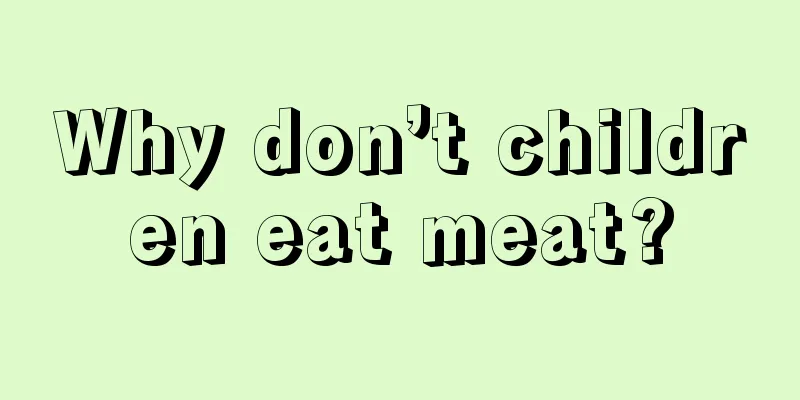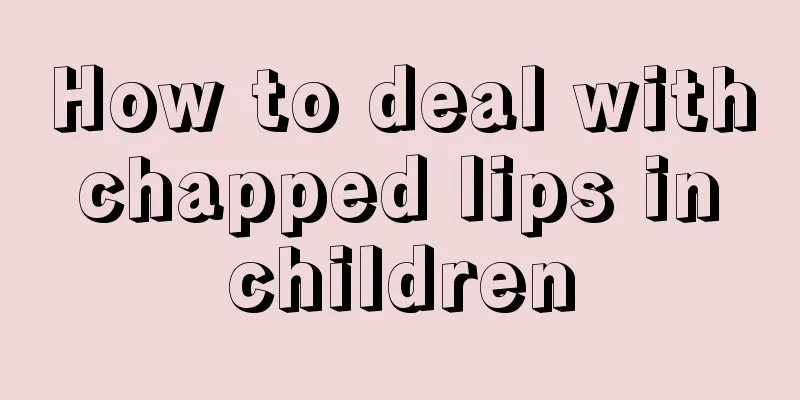How much does a full-month baby eat?

|
The baby is one month old, and the mother has finished the confinement period and can take better care of the baby. The mother has also begun to slowly adapt to the new life with the baby. Many babies fall asleep after feeding, and wake up crying after a while. When they wake up, they want to eat, and cry if they are not fed. New mothers don’t know how to take care of the baby. How much should a baby who has just turned one month old eat? How can scientific feeding make the baby sleep well, eat well, and grow up healthily? The main ways of feeding newborn babies include breastfeeding, artificial feeding, and mixed feeding. Among them, breastfeeding refers to feeding with the mother's milk, which is the best method of feeding newborns; artificial feeding refers to artificial feeding with milk powder or other milk substitutes made from cow, sheep and other animal milk when the mother cannot breastfeed for various reasons; mixed feeding refers to feeding with other milk substitutes such as cow's milk, goat's milk, etc. when the mother does not have enough milk and cannot feed multiple times. It is better to have a longer interval between feedings with formula milk, at least 3-4 hours! Because it contains high protein content and is not easy to digest, if you feed too much, it will easily cause a burden on the baby's liver and kidneys. If the child wakes up and wants to eat, you can let the baby drink some boiled water. If he doesn't want to drink plain water, you can add a small amount of glucose. Full-term infants need about 2 to 3 grams of protein per kilogram of body weight per day. The total daily fat requirement is 9 to 17 grams per 100 calories. Unsaturated fatty acids account for 51% of breast milk, of which 75% can be absorbed, while unsaturated fatty acids account for only 34% of cow's milk. Linolenic acid and arachidonic acid are essential fatty acids. Deficiency of linolenic acid can cause skin rashes and growth retardation, while arachidonic acid is used to synthesize prostaglandins. Generally speaking, the mother can touch the baby's belly. If it does not feel bloated and the baby has no intention of eating anymore, it means the baby is full. If the baby falls asleep during feeding, the mother can touch the baby's feet appropriately. If the baby continues to eat, the mother should still feed the baby. The baby's appetite is relatively small, so follow the principle of small and frequent meals. After feeding, the mother should pat the baby's back to burp him and then coax the baby to sleep well. There is no need to limit the time of breastfeeding. It is best to breastfeed during the early stages of the baby's growth. |
<<: What are the development indicators of a 16-month-old baby?
>>: What is the development standard of a 110-day-old baby?
Recommend
Treatment of bronchopneumonia in children
Speaking of pneumonia, I believe many people are ...
The child has a stomachache and vomits
Babies are very prone to illness during their gro...
Six things you shouldn’t say to your baby? Parents, please remember this.
Nowadays, many parents speak to their children ca...
The reason why a newborn has a lot of eye mucus in one eye
Everyone knows that every day both adults and chi...
One of the child's testicles is larger than the other
Many parents find that one of their children'...
What to do if your child has neck inflammation?
Children's bone strength, body organs, immuni...
Treatment of recurrent fever in a two-year-old baby
In fact, in daily life, many parents do not have ...
What is the reason why children sweat a lot in summer?
I believe that parents know their children’s phys...
Treatment of fever and shivering in children
I wonder if your children often have fever and sh...
What to do if your eight-month-old baby has flat blood
Iron deficiency anemia is a common disease in chi...
Symptoms of emotional disorders in children
Emotional disorders are a type of mental illness....
Why are three-month-old babies easily frightened?
In life, some parents always complain that their ...
Is it normal for a newborn to have poop after eating?
The physical development of a newborn is relative...
How to perform massage techniques on children with fever?
In fact, when a child has a fever, it is feasible...
Why do premature babies have colds and nasal congestion?
In each of our families, the health of the baby i...









